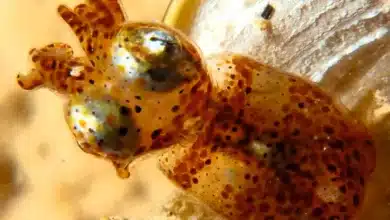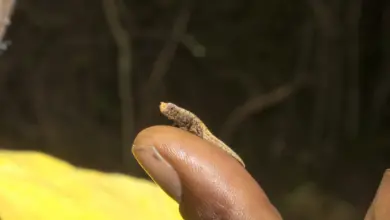Discovering DiCaprio’s Snail-Eating Snake: Unveiling Nature’s Wonders
Scientific Name: Sibon irmelindicaprioae | belongs to the genus Sibon, and subfamily Dipsadinae.[5][2] It is also called DiCaprio’s snail-eating snake.
In the vast and intricate tapestry of Earth’s biodiversity, new species are constantly being discovered, each unveiling a unique facet of nature’s creativity. Among these recent discoveries is a remarkable serpent known as DiCaprio’s snail-eating snake (Sibon irmelindicaprioae). Named in honor of the renowned actor and environmental activist Leonardo DiCaprio, this species has captivated the scientific community and nature enthusiasts alike with its intriguing behavior and distinctive characteristics.
Origin: DiCaprio’s snail-eating snake was first identified in the Sierra Nevada de Santa Marta mountain range in northern Colombia. This biodiverse region, characterized by its rugged terrain and diverse habitats ranging from cloud forests to montane grasslands, has long been a hotspot for biological exploration. It was amidst these mist-shrouded peaks and verdant forests that researchers stumbled upon this previously unknown species of snake, adding another chapter to the region’s rich natural history.
Facts:
- Taxonomy: DiCaprio’s snail-eating snake belongs to the genus Sibon, a group of non-venomous snakes known for their specialized diet of snails. Its specific epithet, irmelindicaprioae, pays homage to Leonardo DiCaprio’s contributions to environmental conservation and awareness.
- Appearance: This snake exhibits distinctive morphological features that set it apart from other members of its genus. Its slender body is adorned with vibrant hues of green and yellow, providing camouflage amidst the lush foliage of its forest habitat. Its scale pattern and coloration serve as effective adaptations for both concealment and thermoregulation.
- Diet: True to its name, DiCaprio’s snail-eating snake primarily feeds on snails, utilizing specialized anatomical adaptations to extract these mollusks from their shells. Its dentition is uniquely suited for this purpose, featuring small, recurved teeth ideal for gripping and manipulating its soft-bodied prey.
- Ecology: The snake’s habitat preferences are closely tied to the presence of its primary food source—snails. It is most commonly found in humid montane forests and cloud forests, where snail diversity is high. Its ecological role as a predator of snails likely influences both the abundance and distribution of its prey species within its habitat.
Conservation Status: As with many species inhabiting fragile and restricted habitats, the conservation status of DiCaprio’s snail-eating snake remains uncertain. While it is currently believed to have a relatively restricted range within the Sierra Nevada de Santa Marta, ongoing habitat loss and degradation pose significant threats to its long-term survival. Deforestation, agricultural expansion, and climate change all contribute to the habitat fragmentation and degradation that imperil this species and the ecosystems upon which it depends.
Conclusion: The discovery of DiCaprio’s snail-eating snake serves as a poignant reminder of the countless wonders awaiting discovery within Earth’s diverse ecosystems. It underscores the importance of continued exploration and conservation efforts to safeguard these treasures for future generations. By protecting not only charismatic megafauna but also lesser-known species like this enigmatic serpent, we honor the interconnected web of life that sustains us all. In naming this species after Leonardo DiCaprio, we not only pay tribute to his environmental advocacy but also highlight the vital role that individuals and society as a whole must play in preserving our planet’s natural heritage.



